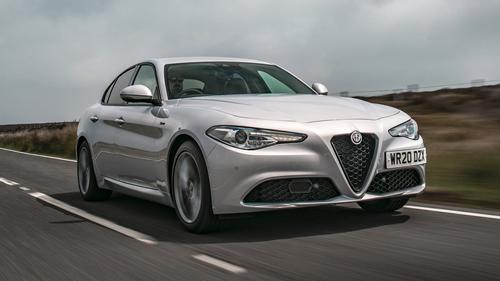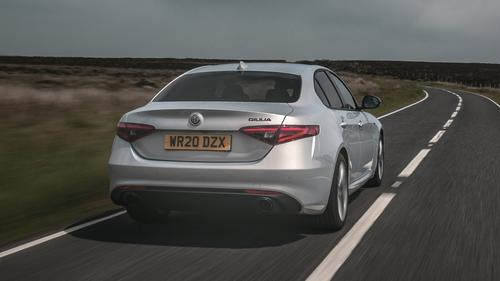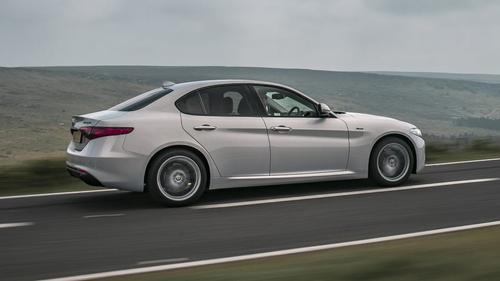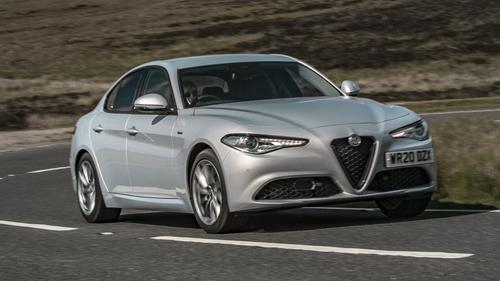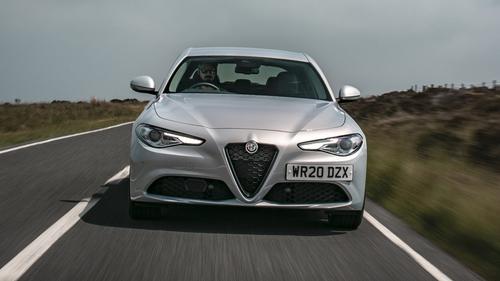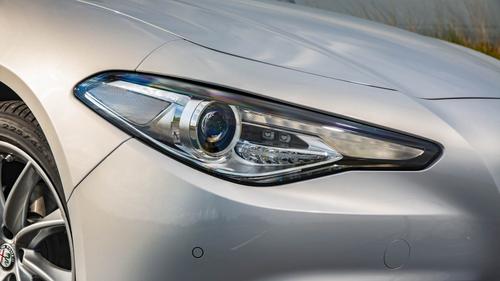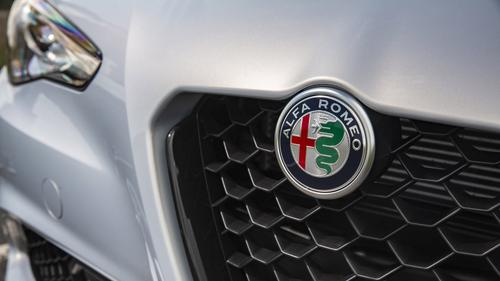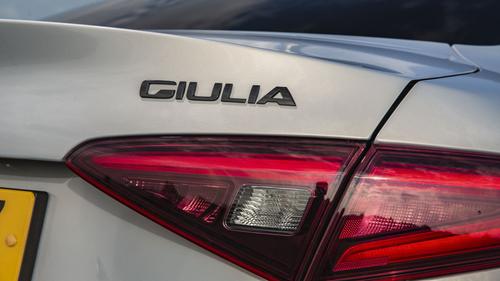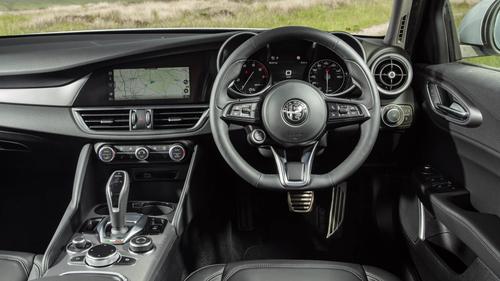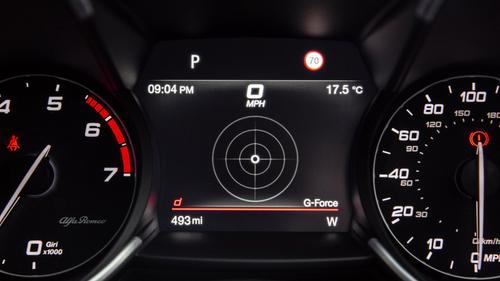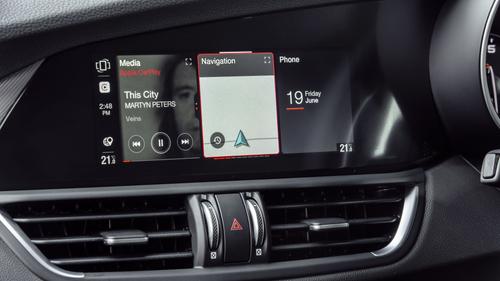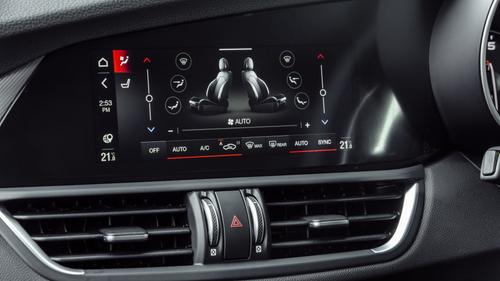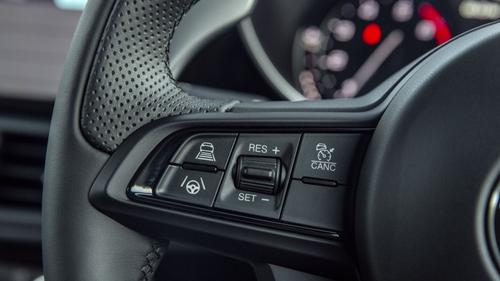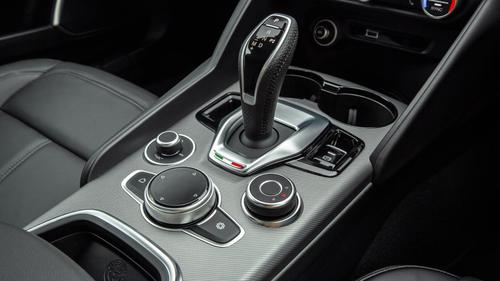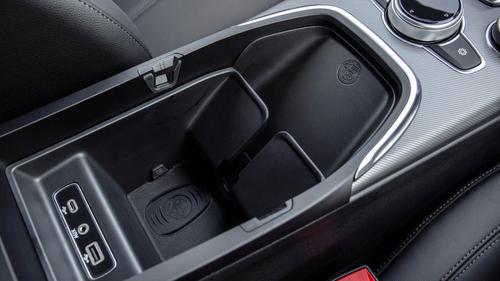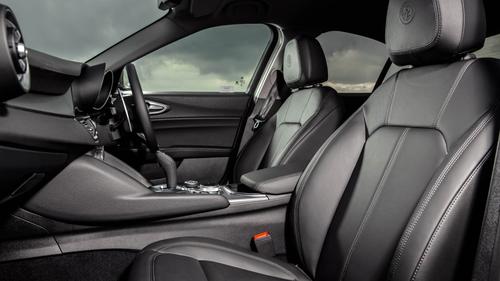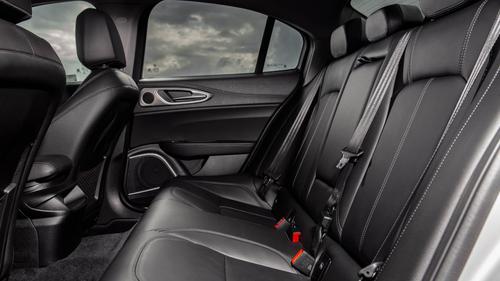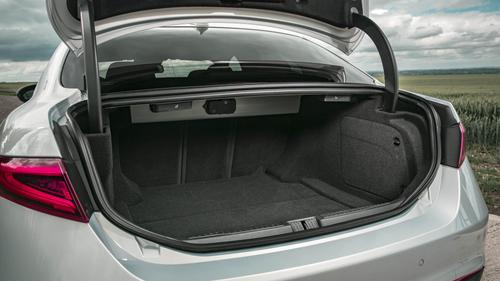

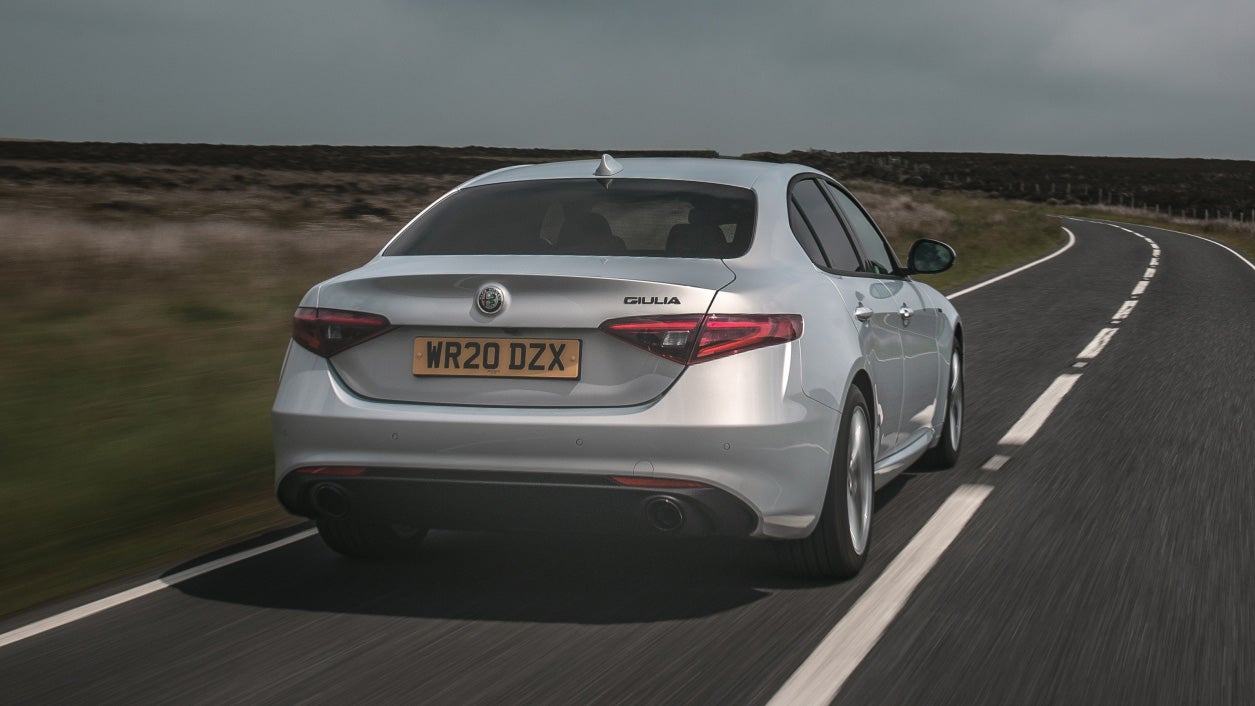
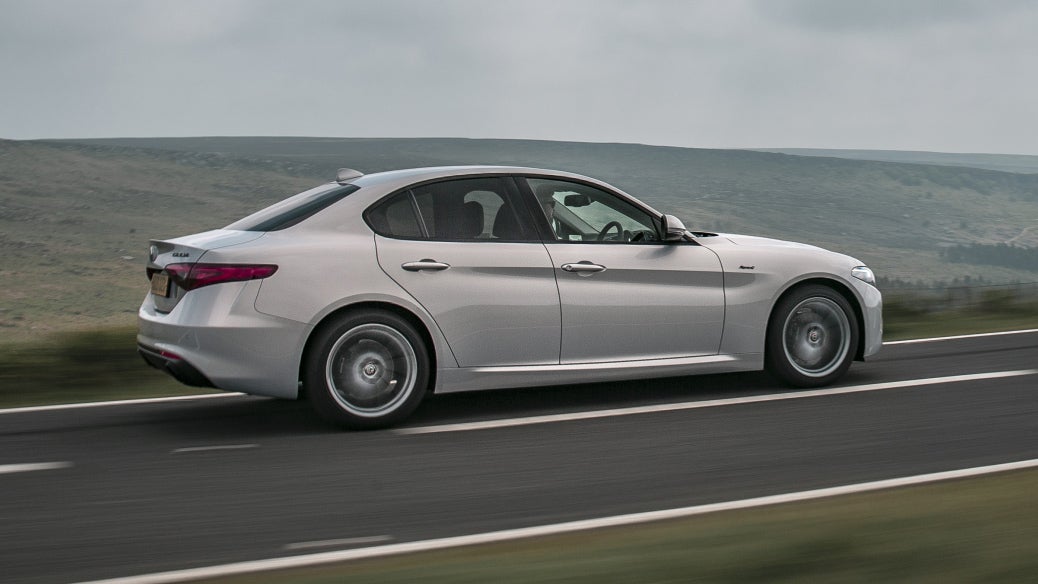

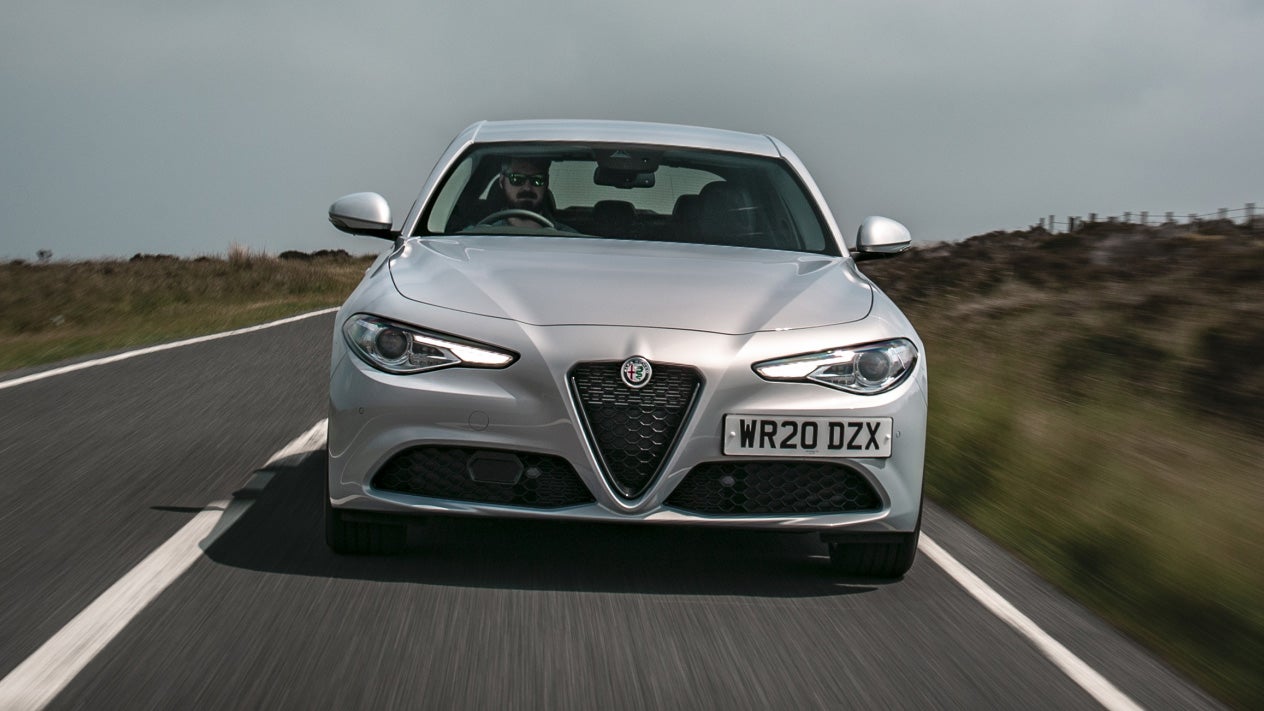
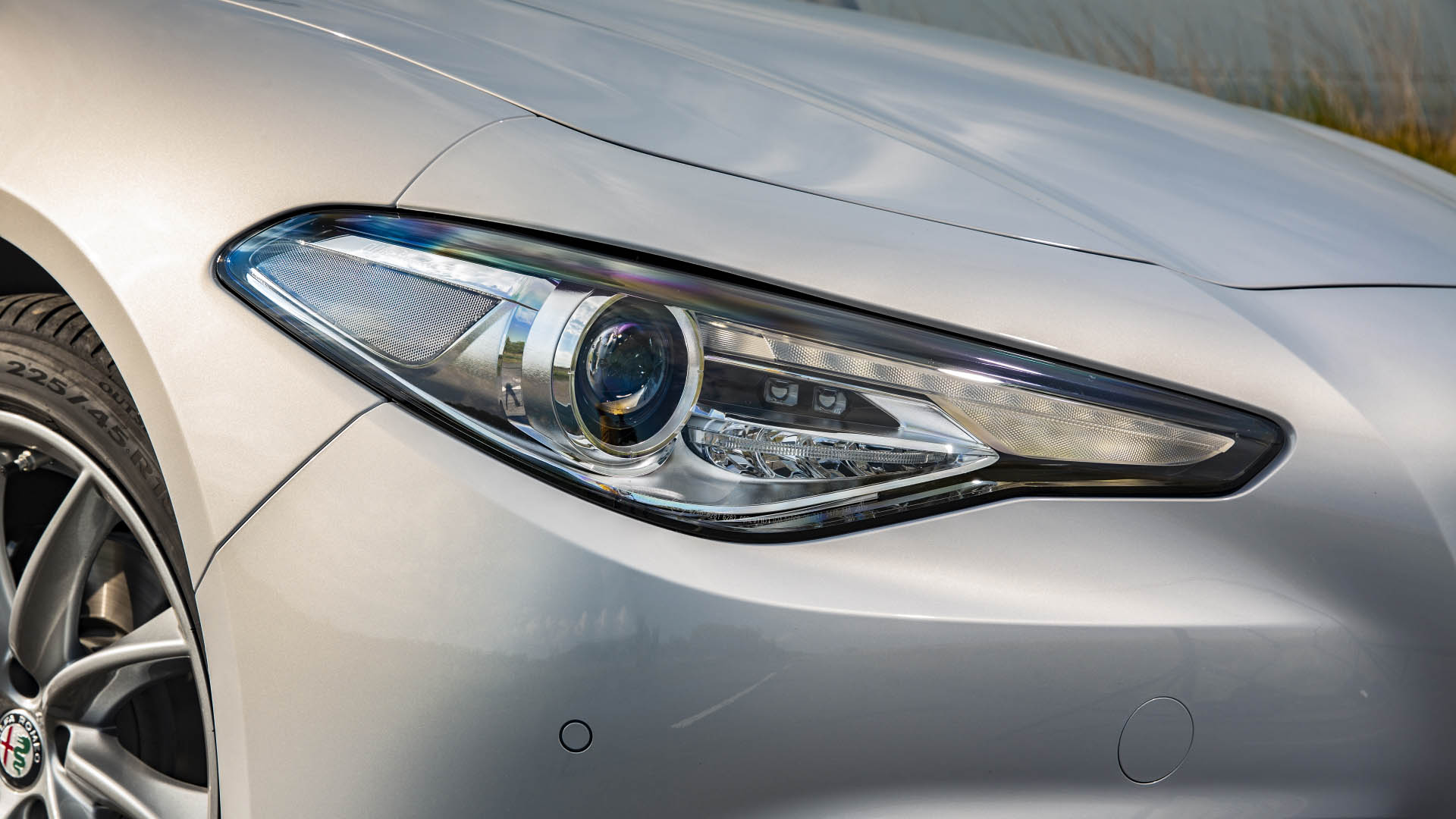
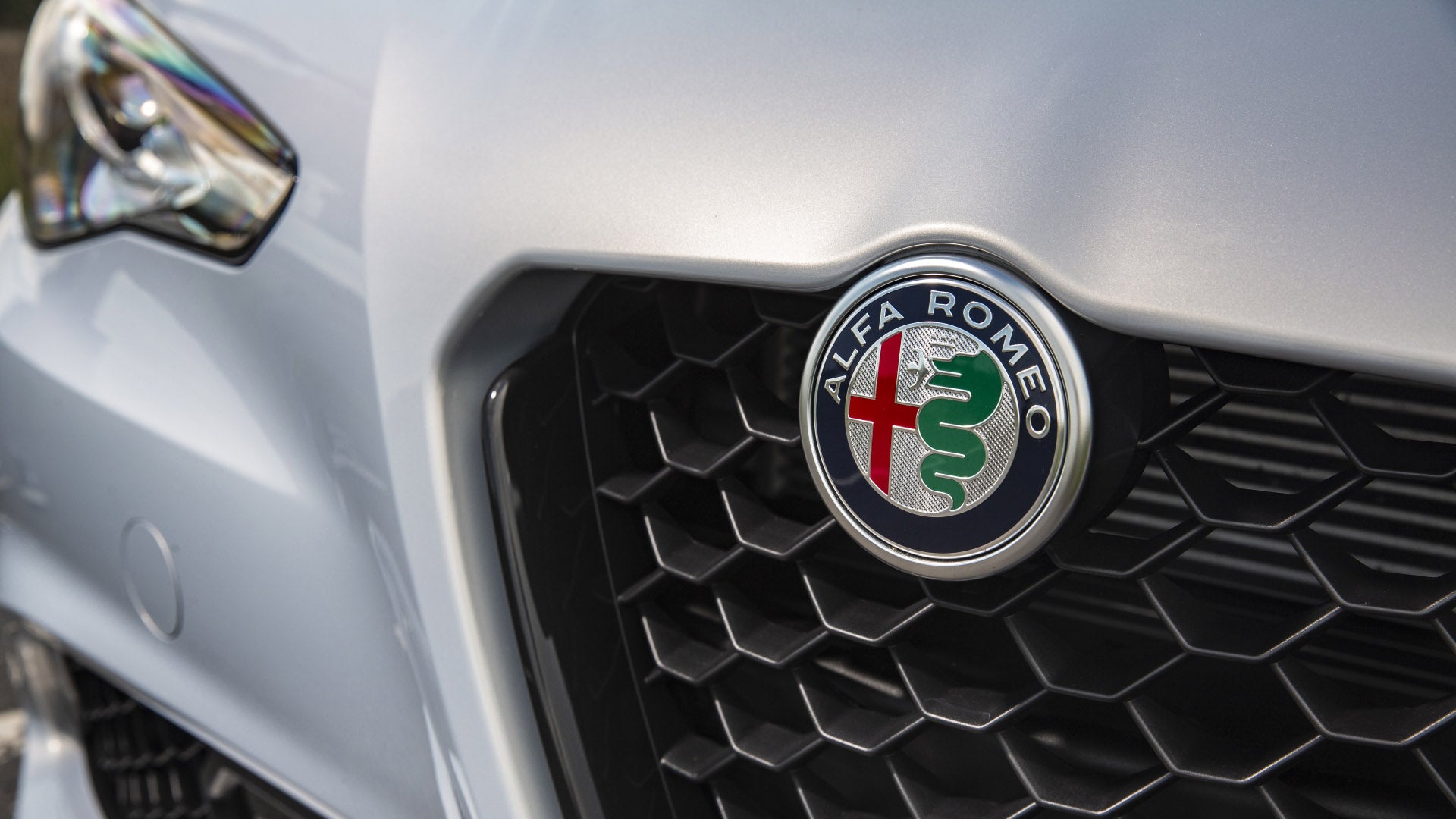
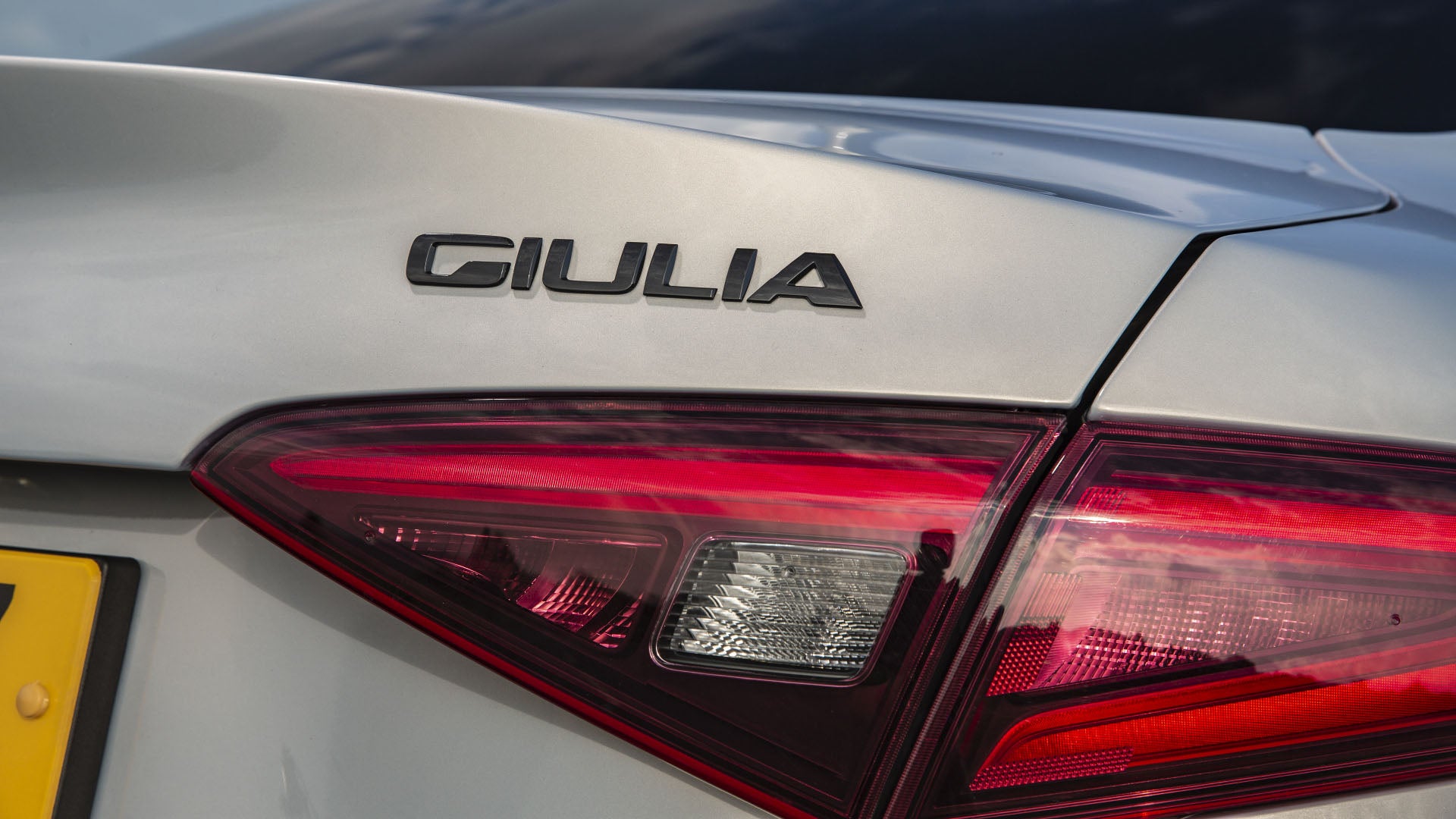
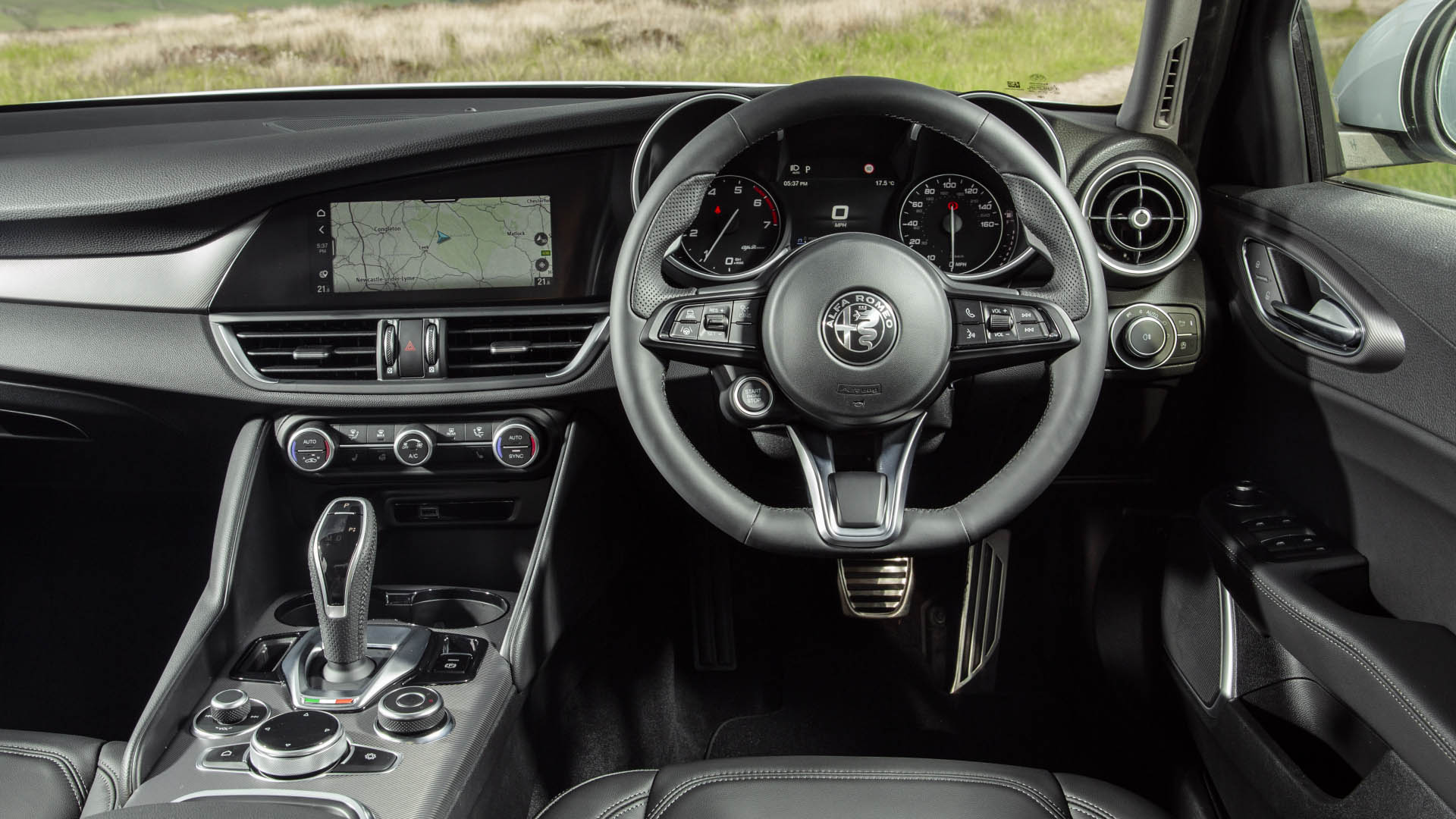


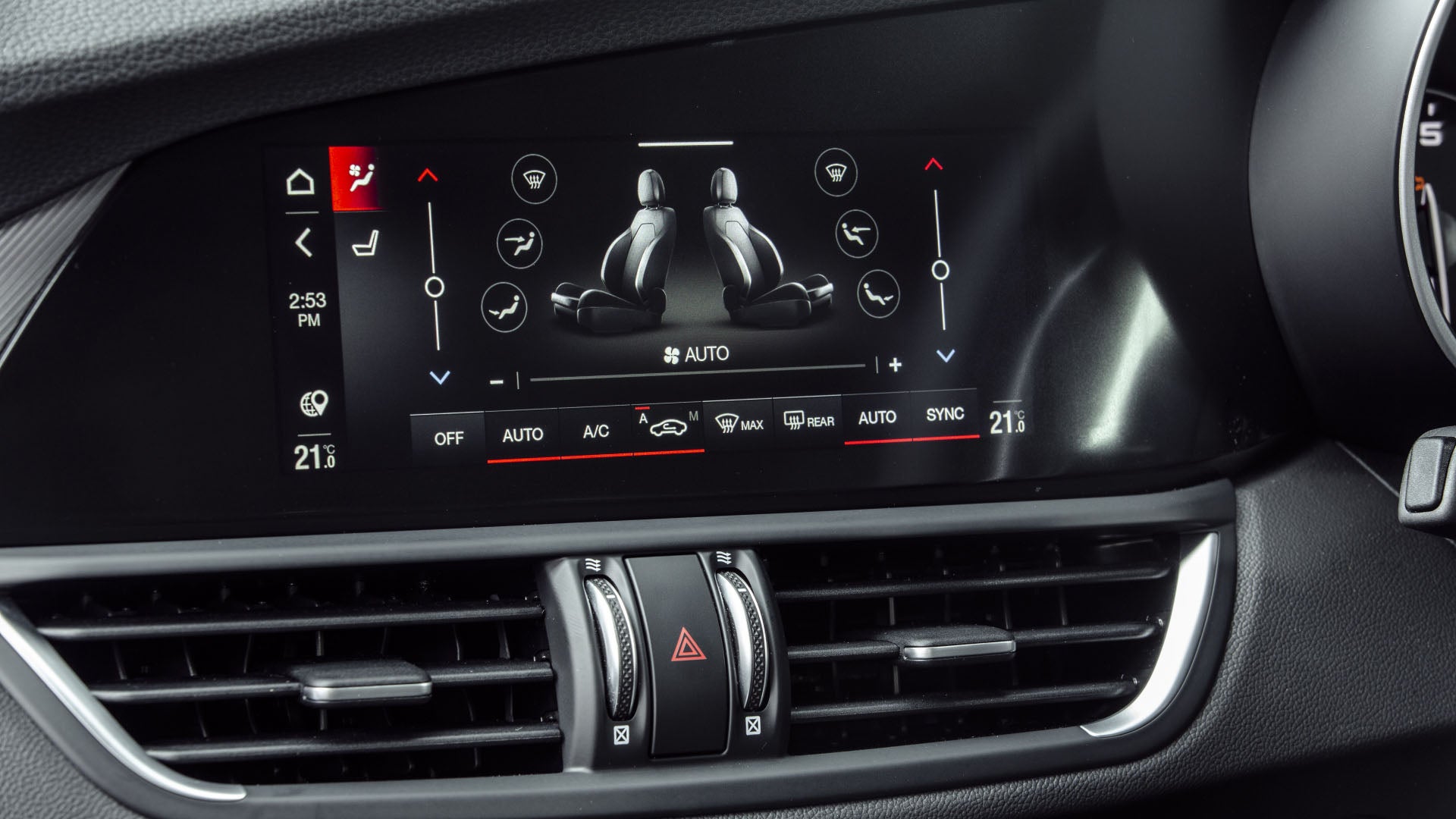
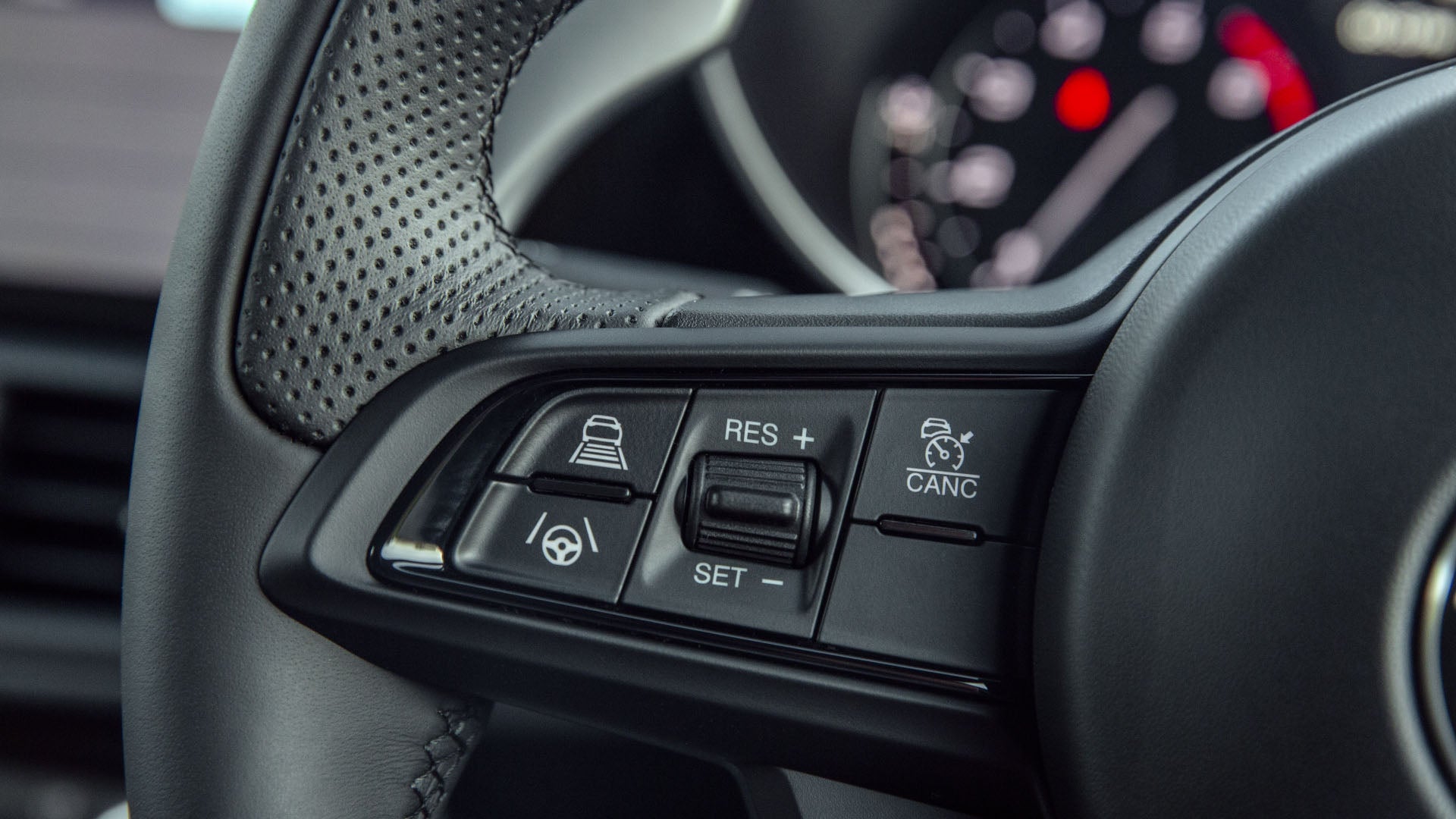
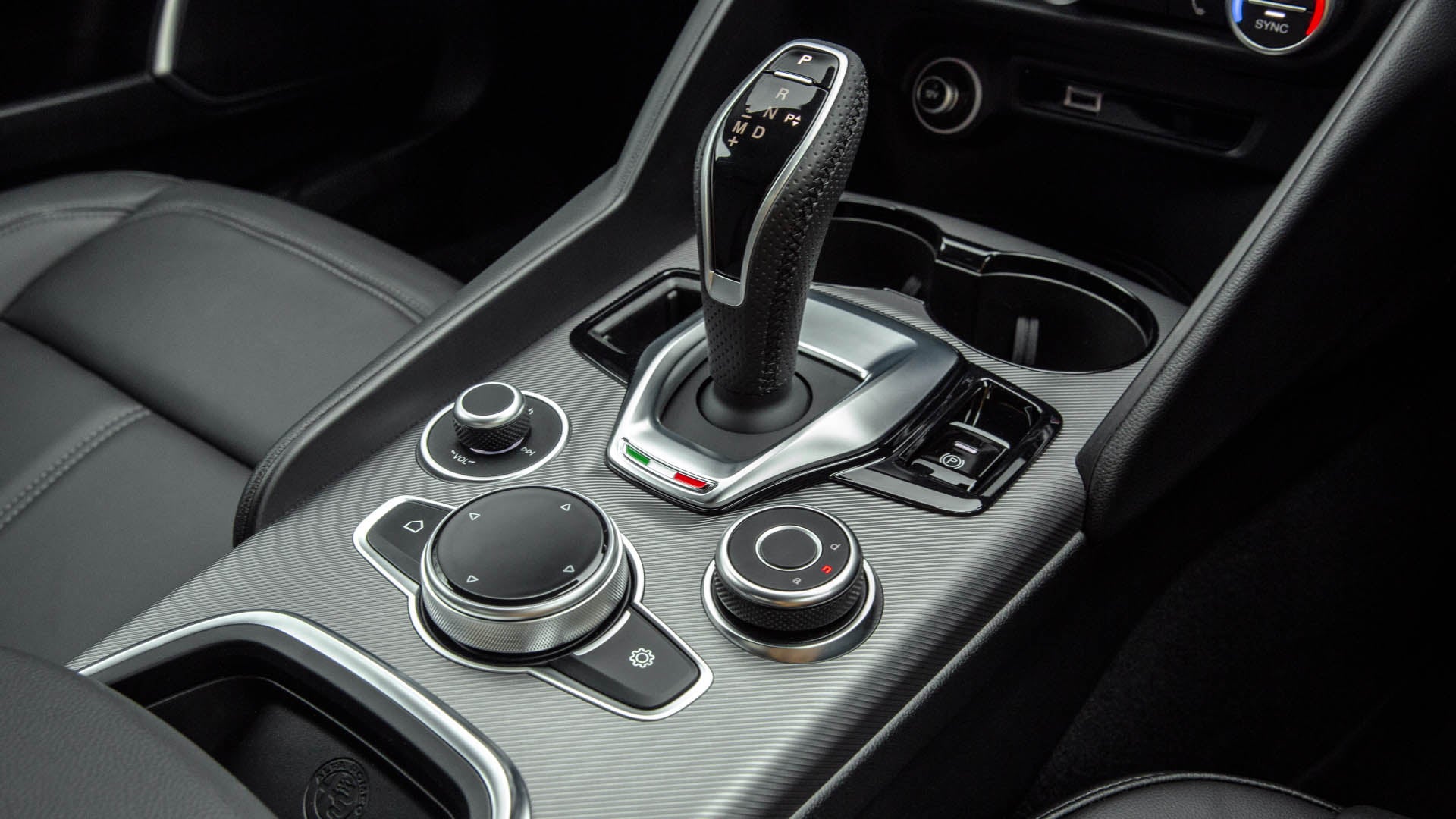

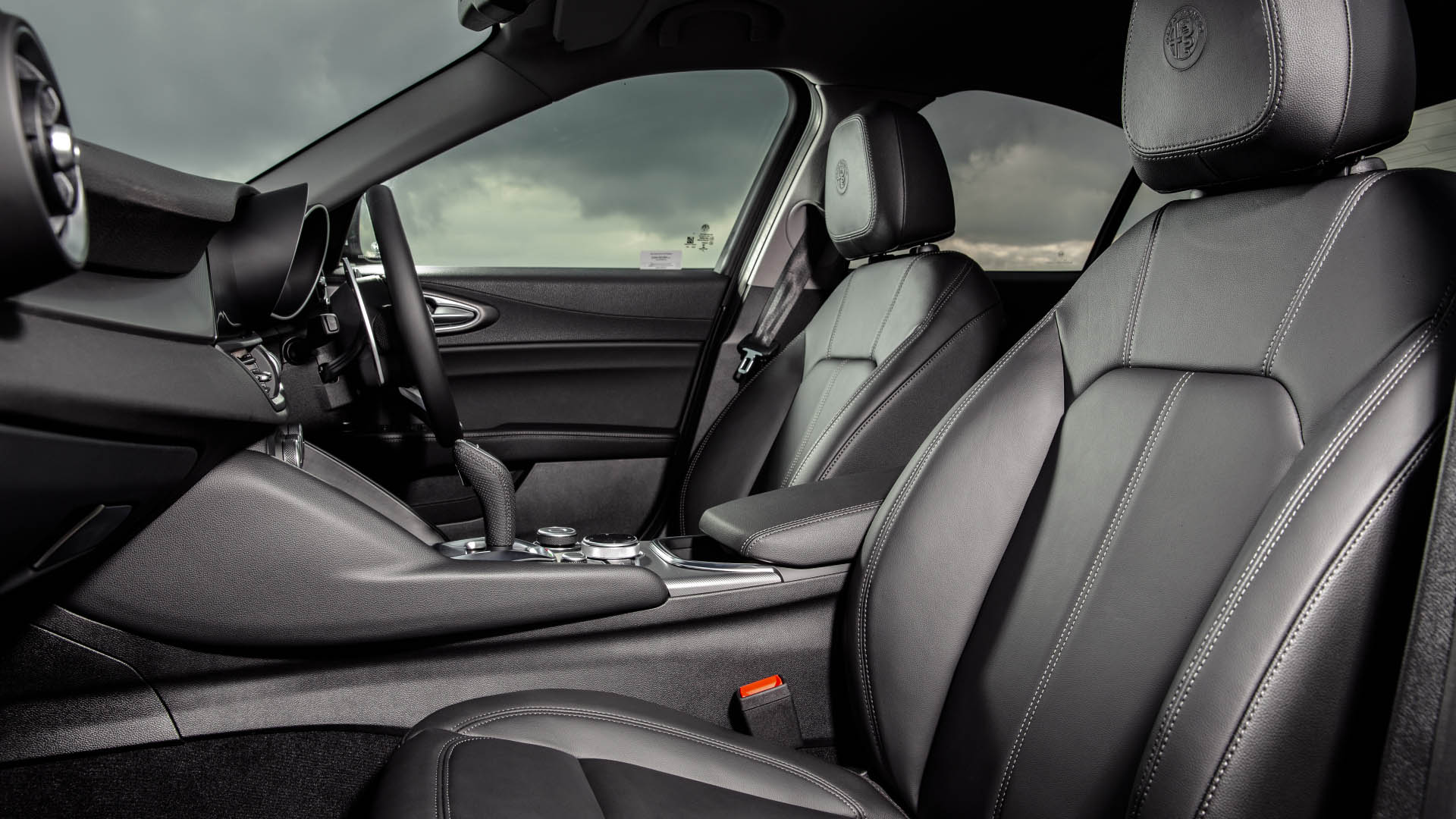
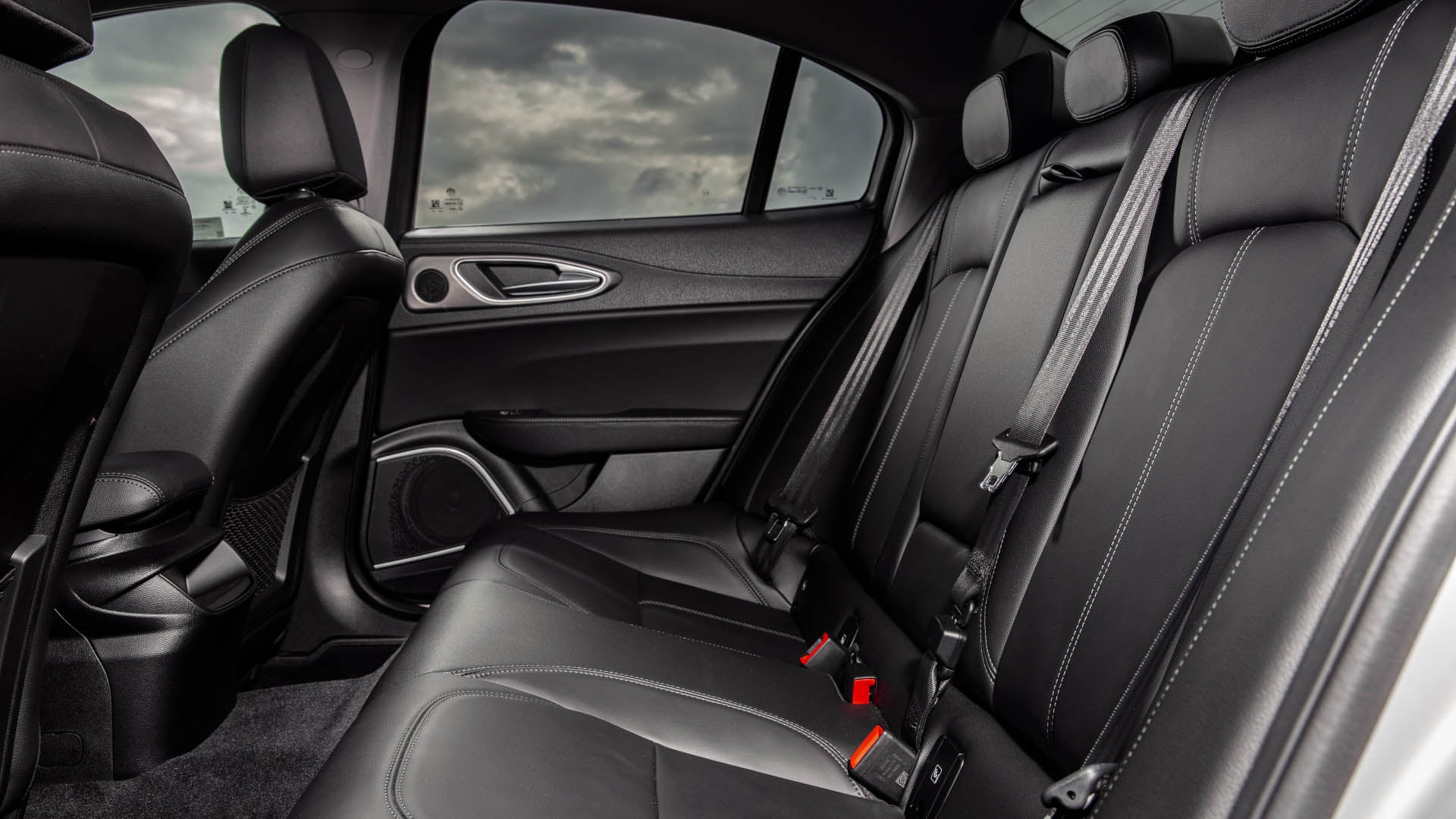
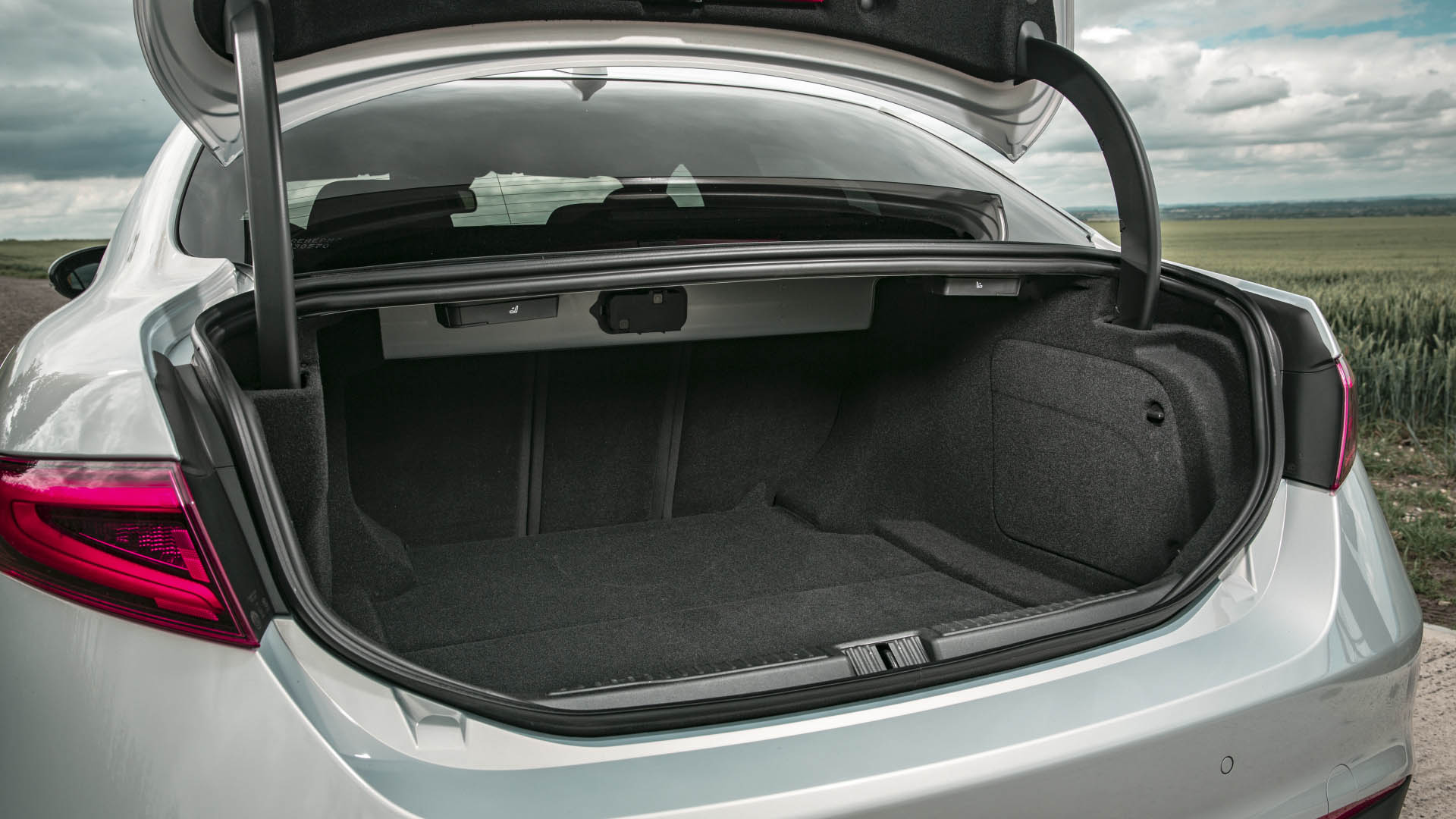
Alfa Romeo Giulia Review

The Alfa Romeo Giulia is a car you’re guaranteed to look back at once you’ve parked.
It’s dripping with style and drives as well as it looks, but it’s not as multi-talented as the all-conquering BMW 3 Series.
- Sports car handling
- Fast petrol engines
- Not a mainstream choice
- Not as practical as rivals
- Thirsty petrol engines
- Small infotainment screen
Should I buy an Alfa Romeo Giulia?
The Alfa Romeo Giulia, and the related Stelvio SUV, were meant to turn Alfa Romeo around – and actually make the company some money. To give you an idea of how that went, everyone now says the company’s newest Tonale model will be the one to turn Alfa Romeo around. Ahem.
It’s not that the Giulia is a bad car – far from it. The Giulia is fun to drive, powerful and engaging, but the BMW 3 Series is still the default choice. BMW’s defining saloon is a better all-rounder than the Giulia, and probably easier to live with. But the 3 Series is ten-a-penny compared to the exclusive, exotic-feeling Giulia, and the Giulia feels more special. It somehow gets under your skin more than the BMW does.
That’s true of both the range-topping performance models and the more affordable versions, and no Giulia is slow.
Alfa Romeo has long suffered a poor reputation for reliability, but you should count yourself unlucky if a modern one goes wrong. The vast majority should prove to be dependable, and it’s not like BMW or Audi have perfect reliability scores either. If you’re still wary of the Alfa’s innate Italian-ness, consider an extended warranty for extra peace of mind.
Interior and technology
Drop into the Giulia’s cabin and you’ll find it gets a lot right. You’ll notice the steering wheel-mounted engine start button, the textured leather wheel grips and the slender, metal gearshift paddles. It all feels theatrical and sporty. Even the dark chrome steering wheel badge is a highlight.
You sit low and the high dashboard has a cocooning effect. The Giulia’s dash still swoops over the top of the infotainment screen, although the downside of that is that the wide 8.8-inch infotainment screen looks small by modern standards.
In 2020, the screen became a touchscreen, but there’s still a rotary dial controller – just like BMW’s iDrive system – if you’d rather not get grubby fingerprints all over the screen. We also found Alfa’s system to be more responsive when you use the click wheel, and it’s more satisfying, too. The dial feels just as high-quality as BMW’s and it lets you whizz through different menus without taking your eyes off the road and steadying your hand. However, Apple CarPlay and Android Auto come as standard if you’d rather bypass Alfa’s built-in system. New Giulias made from 2023 onwards also come with a 12.3-inch digital instrument cluster.
Every time the Giulia has been updated, build quality and material quality has got slightly better. It’s still not quite as premium-feeling as the 3 Series and some of the surfaces are varied in quality, but there are plenty of soft-touch areas and interesting textures. All the switchgear feels solid and responsive, though. We're fans of the carbon fibre trims you get in the rapid top-spec Quadrifoglio models.
Standard equipment includes two-zone climate control, cruise control, lane-departure warning and alloy wheels. Newer and higher-spec cars get either bi-xenon or LED headlights, plus adaptive cruise control and heated leather sports seats. Veloce adds keyless entry and front parking sensors.
Practicality
How tall are your friends or family? If your rear-seat passengers are going to be under six foot tall, they’ll fit snugly in the back of the Giulia. The car’s sloping roofline means headroom is okay rather than great, but there’s enough legroom to allow most passengers to stretch out.
Treat the Giulia as a four-seater and you won’t be too disappointed. The fifth seat really won’t be comfortable for anyone sitting there – it’s not very wide, and the transmission tunnel beneath is enormous. With three pairs of legs sharing two footwells, everyone will feel very hemmed in.
The other benefit of treating the Giulia as a four-seater is that you can pull the central armrest down and use its cupholders. The door bins are only good for holding pick-me-ups – you’ll get a can of Red Bull or an americano in them but they’re too small and too awkwardly shaped for anything else. Up front, there are a few more slightly usable storage areas and a couple of phone trays.
If the Giulia came with a hatchback tailgate or was offered as an estate, it’d be much more versatile. As it is, it only comes as a saloon, so it won’t suit you if you need a large boot opening to carry bulky stuff. Even compared with its closest rivals, the Alfa’s boot opening is quite narrow and it’s not quite as big as the space in the 3 Series. Still, it’ll easily swallow a couple of golf bags or large suitcases, or even a narrow pushchair.
Engines and performance
This is where the Alfa Giulia shines. It’s quite a light car compared to its rivals, and that helps acceleration and handling. Even the entry-level 200hp 2.0-litre petrol engine is as quick as a hot hatchback, with 0-62mph taking just six-and-a-half seconds.
Immediately, it feels more alive than the 190hp BMW 320i – drive them back-to-back and you’d think the Alfa has significantly more than 10 extra horsepower. It’s in the mid-range where the Alfa feels most powerful, and it’s never short of pulling power when you just need that burst of speed.
We also found the Alfa’s gearbox to be slightly more natural and intuitive than the BMW’s. Alfa’s eight-speed auto is just slightly more responsive, which helps the car’s sporty character – a good thing considering there’s never been a manual gearbox option.
During our time with the car, the fuel economy readout said the car was averaging 31mpg, which is a little low compared to what we’d ideally expect. The on-paper figure is 38mpg, compared to 42mpg for the BMW 320i. Used buyers can find diesel Giulias, built until 2020, which can manage 50mpg – but a petrol engine certainly suits the Giulia better. Unlike the 3 Series and Mercedes C-Class, there’s no hybrid option.
The 2.0-litre petrol engine is also used in the high-spec Veloce model, but here it’s tuned to 280hp. This reduces the 0-62mph time to just 5.7 seconds. More importantly, the Veloce’s four-cylinder engine sings rather than drones, so it’s an occasion to hold onto gears and explore the top of the rev range. It’s one of our favourite four-cylinder engines.
If you can afford it, the Giulia Quadrifoglio is even better. This is the flagship model – a bona fide super saloon to rival the BMW M3 and Mercedes-AMG C63. It looks the part with carbon-fibre parts and a quartet of exhausts, and it certainly has the speed to match its rivals. A 520hp 2.9-litre V6 engine – partly developed by Ferrari, no less – propels the Quadrifoglio to 62mph in just 3.9 seconds, even though it’s only rear-wheel drive. Cars built from 2023 get tweaked suspension and a mechanical limited-slip differential, which improves the driving experience even more than older cars with an electronic diff.
Driving and comfort
You don’t have to hold out for a range-topping model to get driving thrills. Our 200hp test car was certainly fast enough to feel sporty, and the handling was a delight as well. The Giulia boasts a perfect 50-50 weight distribution, which makes the car feel totally balanced.
The steering is fast and responsive, and the chassis can usually keep up. It handles really nicely, tucking into corners where rivals like the C-Class and Audi A4 would wash out.
In quick corners, there’s a little more body roll than in the 3 Series, and the BMW is generally a touch more composed as well. But the Alfa flows with the road a bit better, and is perhaps a nudge more comfortable over rutted surfaces.
The 200hp petrol engine sounds nice enough but a little muted. Then again, this is the entry-level model that’s not absolutely focused on performance – if you want more noise, step up to the more powerful Veloce.
Sporty Giulia Quadrifoglio models up the ante by at least a factor of three, and provide a thrilling, eye-opening driving experience that rivals – and in some ways, eclipses – the BMW M3. As well as providing a raucous soundtrack with whip-crack gunshots on upshifts when set to Dynamic mode, the 2.9-litre V6 gives the Giulia a character all of its own. It's effortlessly quick through the middle of the rev range, with a top-end rush that's worth holding out for. Yet it still drives with a fluidity through corners that's far more satisfying than the more stop-start approach to corners that the torquier M3 demands.
The biggest improvement to the 2023-onward Giulia Quadrifoglio is the fitment of a mechanical limited-slip differential, in place of electronic torque vectoring. This means that when the rear of the car starts to slide under acceleration out of a corner, it does so more consistently and progressively. Even with the car set to Race mode (which disables the traction and stability controls), the Giulia Quadrifoglio feels completely on your side – finding huge amounts of grip out of corners and putting a smile on your face at all times. We love it.
































